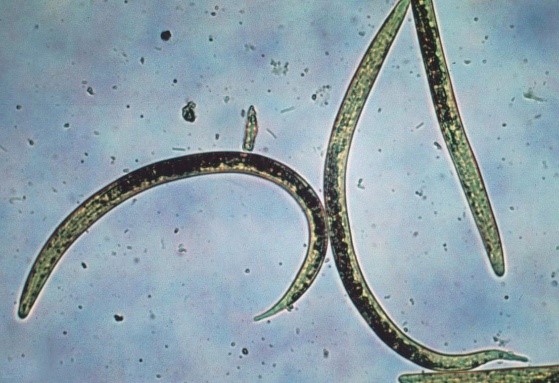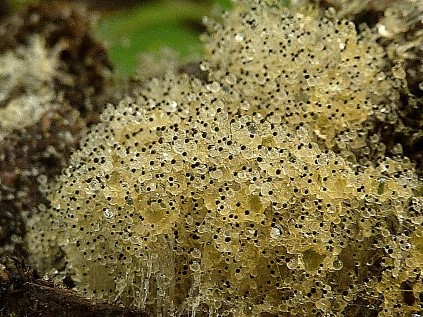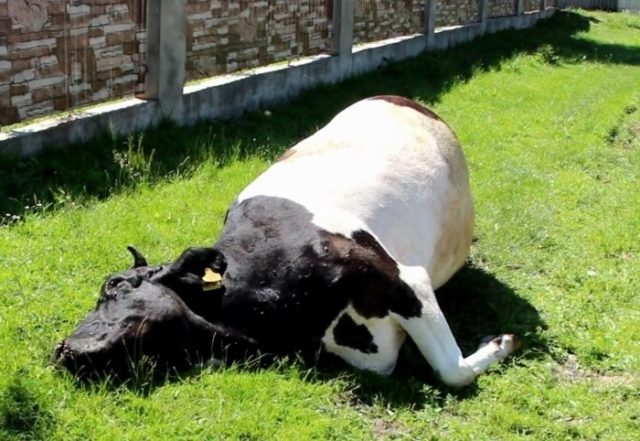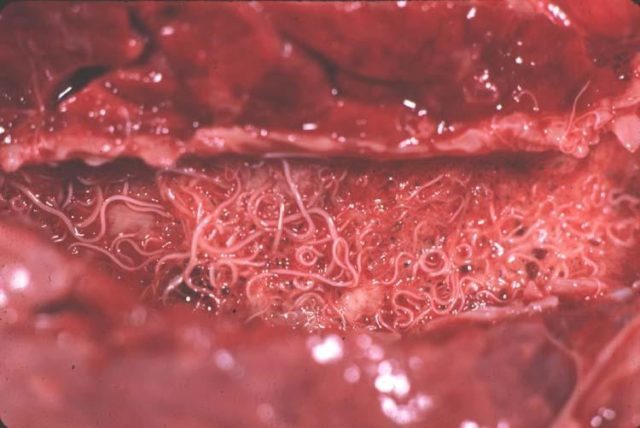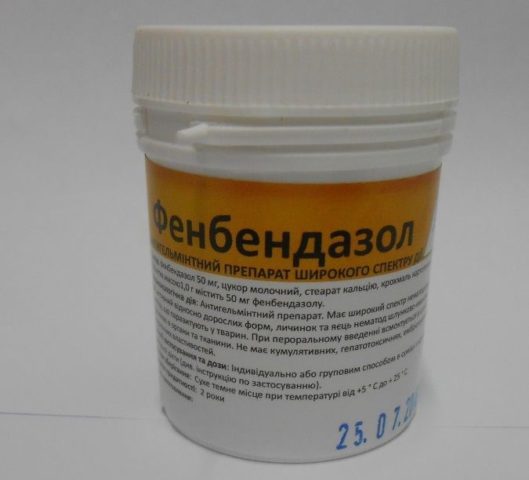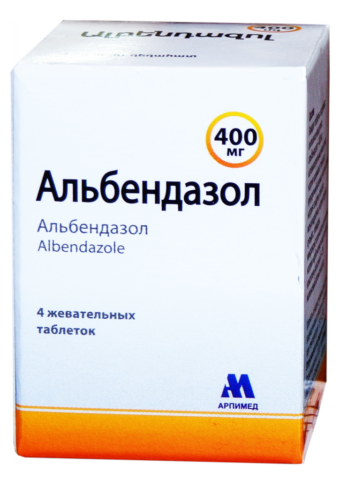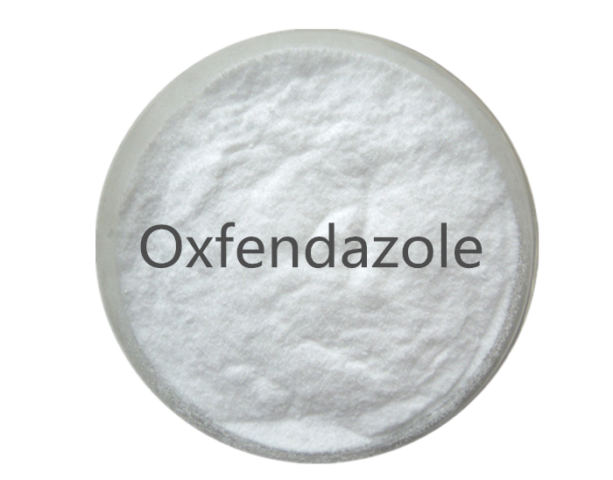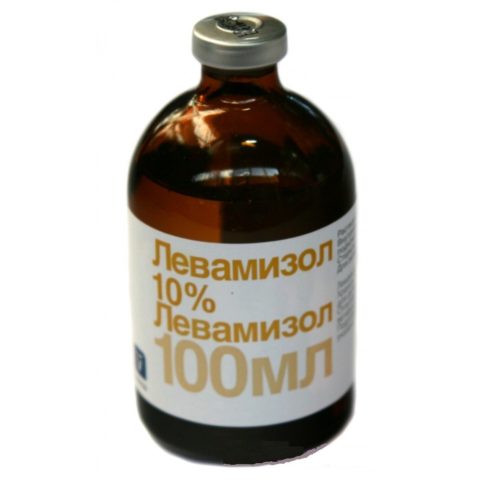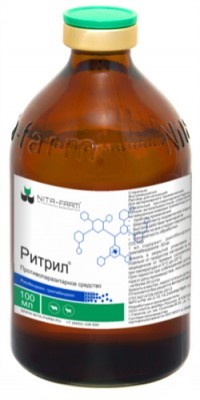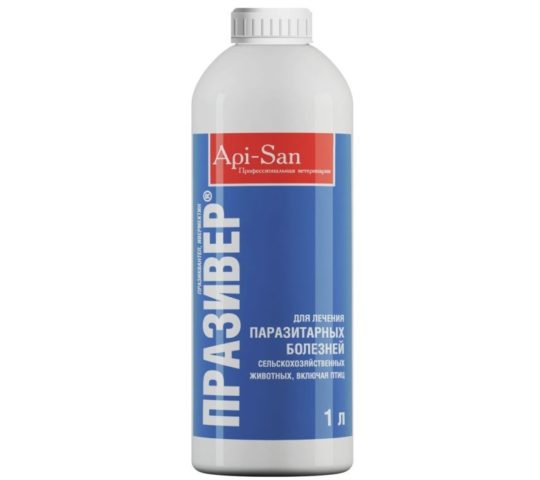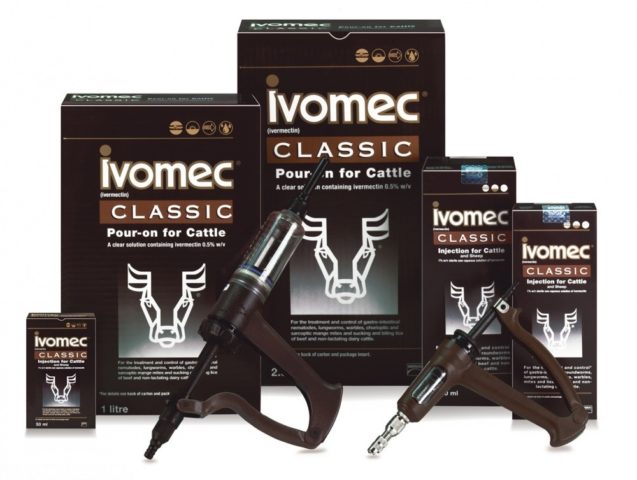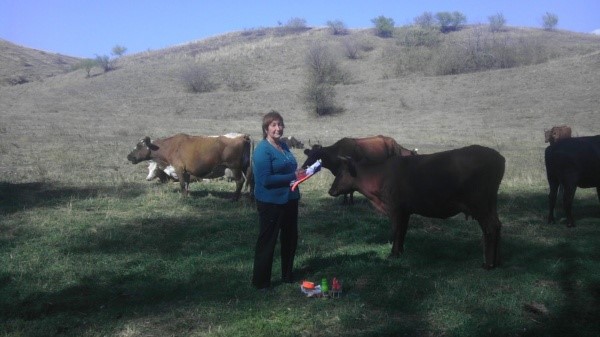Content
Of all invasive diseases, dictyocaulosis in cattle is the most common. Young calves are especially susceptible to infection in autumn. With timely measures, mortality in a herd of cattle can be avoided, but dictyocaulosis is more difficult to cure than other invasive diseases.
What is dictyocaulosis
Parasitic worms, commonly referred to as "worms", are found not only in the gastrointestinal tract. Often, a cough with a cold is caused by a completely different cause. It is very difficult to get really cold. To do this, you need to be very supercooled. But in this case, the development of pneumonia is more likely than "colds".
Due to the season of infection, dictyocaulosis is often mistaken for a cold and not the cause, but the symptoms are treated. As a result, the disease develops and leads to the death of cattle, especially calves of the current year of birth.
The real cause of cough in cattle is the worms that live in the lungs. These are nematodes: filamentous roundworms 3-15 cm long. They belong to the genus Dictyocaulus. There are several types of dictyocaulus. Although scientists have not yet agreed on the classification of these nematodes. In cattle, the most common Dictyocaulus viviparus or bovine lungworm. The same species infects wild deer and elk with dictyocaulosis. Although this is where the discrepancy lies: some scientists consider the nematode that infects wild artiodactyls as a different species. But it has been established that in any case, these parasites can cross-infect cattle and deer.
Infection of cattle with pulmonary filamentous worms is called dictyocaulosis.
Animals are generally well adapted to life in the open air. You can't take them in the autumn rain.
Ways of infection with dictyocaulosis
Young cattle of the first and second years of life are most susceptible to nematodes. Animals become infected with dictyocaulosis in the pasture while grazing with already sick individuals. Infection occurs when nematode larvae are swallowed along with water or grass. Concentrated keeping of animals of different ages on the pasture contributes to the spread of cattle dictyocaulosis.
The spread of cattle dictyocaulosis in pastures is facilitated by:
- floods;
- rains;
- fungus from the genus Pilobolus (Pilobolus).
In the southern regions, where drought is common in summer, cases of cattle dictyocaulosis infection do not occur between July and August. In central Russia, the "disease season" lasts from spring to autumn.
The life cycle of dictyocaulos
Parasites have a simple but very interesting life cycle, as they are spread by mold. Adult nematodes live in the branched passages of the bronchi. They also lay eggs there. Since the worms, moving around, irritate the bronchi, cattle coughs reflexively. The laid eggs are “coughed up” into the oral cavity, and the animal swallows them.
The larva of the first stage (L1) emerges from the eggs in the gastrointestinal tract. Further, the larvae, together with the host manure, enter the environment and develop in the feces during the next two stages.
A mold of the genus Pilobolus grows on manure.In the L3 stage, the larvae penetrate the fungi and remain there, in the sporangia (organs in which spores form), until the fungus matures. When a mature fungus throws out spores, the larvae fly away with them. Dispersion radius of larvae is 1.5 m.
Spores of pylobolus pass through the intestines of cattle and in this way can spread over considerable distances.
In the wild, animals do not eat grass next to their species' faeces, but they have no choice in pastures. Therefore, along with the grass, the cattle swallows the larvae of the L3 stage.
Parasites enter the gastrointestinal tract of cattle and pass through the intestinal wall, entering the lymphatic system of cattle and through it to reach the mesenteric lymph nodes. In the nodes, the larvae develop to the L4 stage. Using the bloodstream and the lymphatic system, L4 enter the lungs of the animal, where they complete development, becoming adult nematodes.
Symptoms of dictyocaulosis in cattle
Signs of cattle dictyocaulosis are often confused with a cold or bronchitis. As a result, dictyocaulosis in cattle passes into a severe stage and leads to death. Calves especially suffer from dictyocaulosis. The picture of the disease is not always clear, since it largely depends on the general condition of the animal. But usually there are:
- oppression;
- cough;
- high temperature;
- shortness of breath when inhaling;
- rapid breathing;
- fast pulse;
- serous discharge from the nostrils;
- exhaustion;
- diarrhea;
- tactile fritmit.
The latter means that the vibration of the lungs during breathing in cattle can be “felt” through the ribs.
In advanced cases, dictyocaulosis is complicated by pneumonia, is delayed for a long time and ultimately leads to the death of cattle. With the transition of dictyocaulosis to the terminal stage, the animal will not live long:
- bouts of severe painful cough;
- constantly open mouth;
- a large amount of foam from the mouth;
- heavy breathing, wheezing.
Due to the lack of air in the lungs clogged with worms, the cow suffocates: she falls on her side and lies motionless, not responding to external stimuli. This stage of dictyocaulosis quickly ends with the death of the animal.
Diagnosis of dictyocaulosis in cattle
The lifetime diagnosis of "dictyocaulosis" is established taking into account the epizootological data, the general clinical picture and the results of analyzes of cattle feces and sputum coughed up by animals. If nematode larvae are found in manure and pulmonary secretions, there is no doubt that the cough is caused by pathogens of dictyocaulosis.
Nematodes are different. Many of them live freely in the soil and feed on decaying organic matter. Such worms can crawl to the manure lying on the ground. But the presence of stage L1 larvae in the manure from the rectum is a sure sign of cattle disease with dictyocaulosis.
Pathological changes in dictyocaulosis in cattle
In a deceased animal, a pathological examination reveals catarrhal or purulent-catarrhal pneumonia and a foamy mass in the bronchi. The latter is precisely the habitat of adult parasites.
The walls of the blood vessels in the lungs are hyperemic. The affected lobes are dense, enlarged, dark red. The mucous membranes are swollen. Areas of atelectasis are noticeable, that is, "collapse" of the alveoli, when the walls stick together.
The heart is enlarged. The wall of the heart muscle is thickened. But a variant of delatation is also possible, that is, an increase in the heart chamber without thickening the wall. Changes in the heart muscle are due to the fact that when the lungs are clogged with worms, the animal did not receive enough oxygen. To compensate for the lack of air, the heart was forced to expel large volumes of blood.
Since the larvae from the gastrointestinal tract and mesentery "made their way" into the lungs, they also damaged the intestinal walls. Because of this, point hemorrhages can also be seen there: the exit sites of the larvae at the time of the "journey" to their permanent place of residence.
Treatment of dictyocaulosis in cattle
The main treatment for dictyocaulosis is the timely deworming of cattle with special drugs that affect nematodes. But there are a lot of drugs for dictyocaulosis. There are those that have been used for over 20 years. There are also more modern ones.
Worms are not so complex that they keep their DNA unchanged, despite the effects of various substances. Therefore, like insects, they mutate and adapt to various drugs.
Older drugs:
- Nilverm (tetramisole). For cattle 10 mg / kg with feed or as 1% aqueous solution. Set twice at 24 hour intervals.
- Fenbendazole (Panakur, Sibkur, Fenkur). Dose for cattle 10 mg / kg with feed. Once.
- Febantel (rintal). For cattle, 7.5 mg / kg once orally.
- Albendazole... 3.8 mg / kg orally.
- Mebendazole... 15 mg / kg with feed.
- Oxfendazole (sistamex). 4.5 mg / kg by mouth.
All dosages are indicated for the active ingredient.
Over time, newer drugs for dictyocaulosis have appeared, which have already become familiar. Some of them are complex, that is, they contain more than one active substance:
- Levamectin: ivermectin and levamisole. 0.4-0.6 ml / 10 kg. Used for dictyocaulosis of heifers;
- Rythril... Used to treat young cattle. Dose 0.8 ml / 10 kg, intramuscularly.
- Praziver, the active ingredient is ivermectin. 0.2 mg / kg.
- Monezin... Adult cattle 0.7 ml / 10 kg orally, once.
- Ivomek... For young cattle 0.2 mg / kg.
- Eprimectin 1%.
The latter drug has not yet been licensed, but the recovery of cattle from dictyocaulosis after its use was 100%. The drug is produced in Belarus. The complete release of cattle from nematodes occurs already on the fifth day after the use of new generation drugs. Today, in the treatment of dictyocaulosis, anthelmintics of the aversectin series are already recommended.
Old-fashioned calf treatment
They drive nematodes from cattle lungs with the help of "miraculous" iodine. This method is used in relation to calves, which are easier to fill up than an adult.
Solution preparation:
- crystalline iodine 1 g;
- potassium iodide 1.5 g;
- distilled water 1 liter.
Iodine and potassium are diluted in water in a glass container. The calf is filled up and placed in a dorsal-lateral position at an angle of 25-30 °. The dose per lung is 0.6 ml / kg. For therapeutic purposes, the solution is injected with a syringe into the trachea, first into one lung, and a day later into another. For prophylactic purposes - in both lungs at the same time.
Preventive actions
Considering that it is very difficult to remove nematodes from the lungs, and besides, dead worms begin to decompose there, prevention is economically more profitable. To prevent infection with dictyocaulosis, isolated keeping of calves is practiced:
- stall;
- stall-camp;
- stall-walking;
- pasture in areas free of grazing since last autumn.
Calves are divided into age groups so that older and possibly infected individuals do not transmit nematodes to young ones.
On pastures, young cattle are regularly examined for dictyocaulosis (manure analysis). Surveys begin one and a half months after the start of grazing and are repeated every 2 weeks until the end of the grazing season.
If infested individuals have been found, the entire herd is dewormed and transferred to a stall. Calves of the second year of life undergo preventive deworming in March-April. Cubs born in the current year are driven by worms in June-July. If necessary, that is, if dictyocaulus were found on the pasture, additional deworming is carried out in November before stalling.
Also, back in the days of the USSR, phenothiazine was fed to cattle on pasture in fractional shares, along with feed additives: salt and minerals. In areas unfavorable for dictyocaulosis, as a preventive measure, cattle is dewormed monthly.But this practice is undesirable, since all anthelmintics are poisons and in large quantities poison the prophylactic animal.
There is one more measure that has not been adopted in Russia, but which helps to reduce the number of worms on the pasture: regular manure removal. Since the larvae spread along with the spores of fungi growing on cow feces, timely harvesting will reduce their number. And along with the mold, the number of scattered larvae will also decrease.
In other words, in the West, pasture manure is removed not because there is “nothing else to do,” but because of harsh economic considerations. Removing manure is cheaper, faster and easier than treating cattle for dictyocaulosis.
Conclusion
Dictyocaulosis in cattle can cause a lot of trouble for the owners if they write off the cough and mucus from the nose for a cold. When a cow suddenly shows such signs, you first need to remember how long ago the animal received an anthelmintic. And observe an important rule: when changing the regime of keeping, always deworm your livestock.
